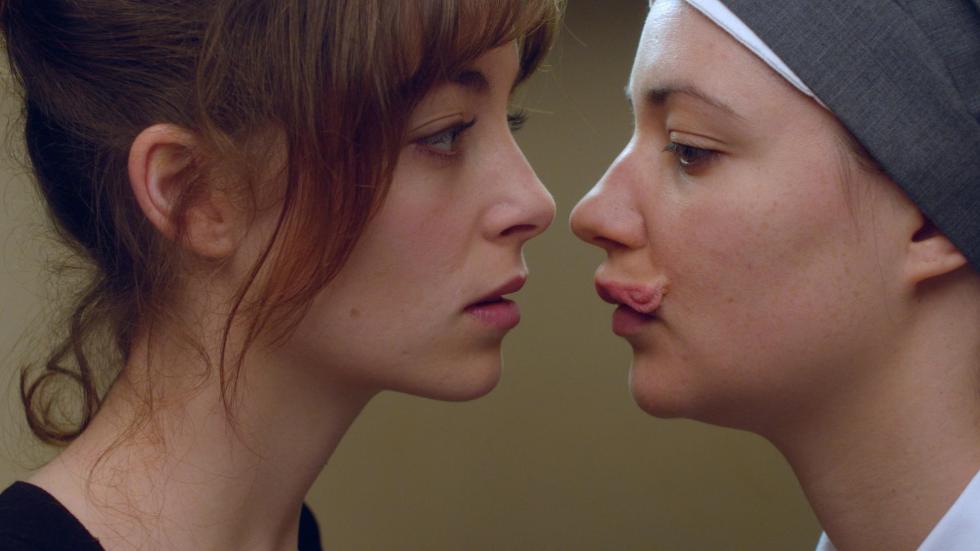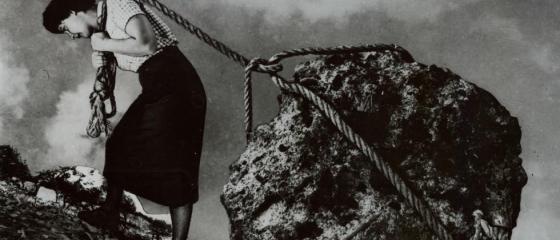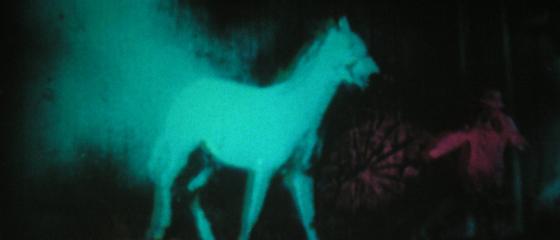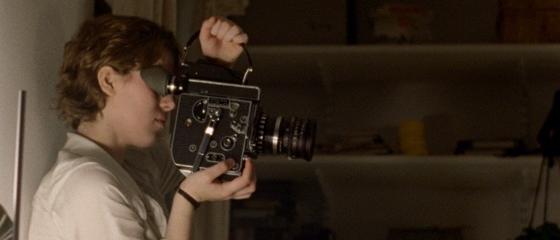«Almost immediately, reality gave ground on more than one point. The truth is that it hankered to give ground.»
«Tlön, Uqbar, Orbis Tertius»
(Jorge Luis Borges, The Garden of Forking Paths, 1941)
A mirror at the end of a hallway, a clearing in the forest, the way of pronouncing a word, a certain gesture that is out of place. Ordinary things that open cracks in reality, shift and alter our way of seeing, pointing to an unnoticed door into hidden dimensions. As happens in Borges’s tales, in all the films that make up this section reality gives ground at some point, to wander along forking paths, and travel through unknown, unlikely folds in time and space.
In the endless work of trying to detect vanishing lines and reiterated pulses in European cinema, this tendency to suggest new paths, breaking points with respect to realism, has become increasingly evident in the films of recent years. You just have to take a look at the programming of this festival to realise: from the short-circuiting human micro-societies by the Greeks Lanthimos and Tsangari, to the fantasy that invades the world of Portuguese director João Nicolau, to the comic strangeness of the French Pierre León, the ironic-imaginative commentary of the reality of Miguel Gomes, or the secret passageways of the conscience from the Italian Bellocchio. Or just take a walk through the competition in this edition: films such as Zama, Mrs. Hyde, Sicilian Ghost Story, Ava, The Wild Boys and Pin Cushion, among others, suggest this estrangement. Far from an approach typical of the cinema of fantasy genre or science fiction, in which worlds are built that are completely separate from what we know and have their own rules, or of magic realism, in which unreal events slip into a continuum, the aim here is to propose a section in which that flight springs from the creation of cinematic language, and the breaking of conventions.
Looking more closely, you could think that all the directors named start from a certain tradition rooted in Europe: from the elastic quality of the reality offered by Vigo and from that disturbing strangeness of Franju, to the digressions of Godard’s story or the gradual unhinging in Pasolini’s Theorem, or the magical game in Céline and Julie Go Boating by Rivette. From the playful, surreal sense of the Czech new wave, to the rotundity of Buñuel’s cinema or to the raptured visions of Zulueta, to name just a few. Insertions of fantasy in the cinematic narrative which link with that Borgesian visionary concept of new dimensions and of new formal vehicles in which to travel to them.
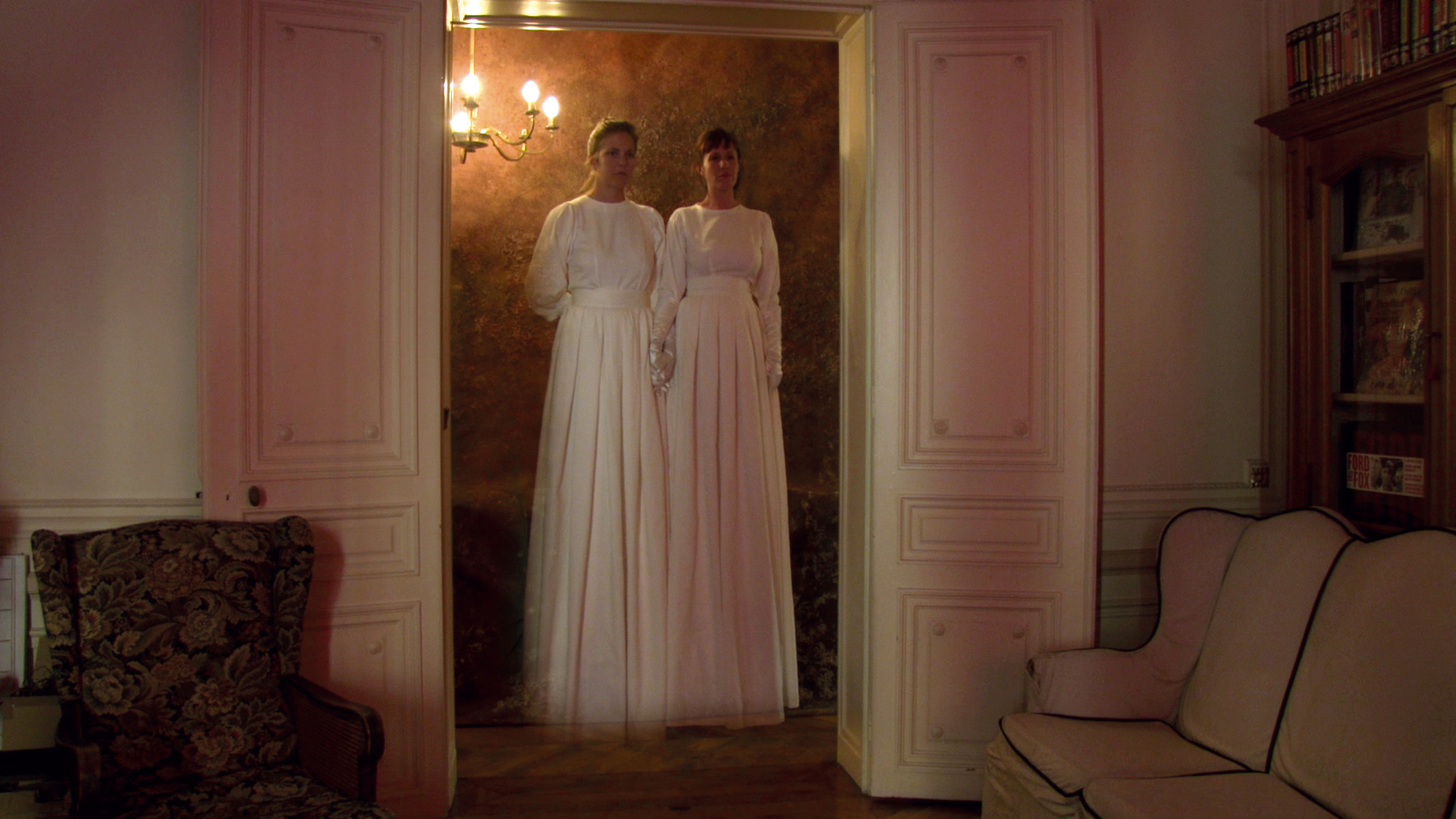
We can start talking of the films in the section by drawing lines of affinity. A very clear one is that which points to the forest as a point of access to estrangement. Characters who are absorbed by the denseness and lose spatial references also see how the props which keep reality in its place become blurred. Heterogeneous variations on a theme, among which is Happy Times Will Come Soon, by Alessandro Comodin. The film is divided in two segments, which eventually overlap: in the first, two young men live in a semi-savage state in the forest; in the second, a young woman finds a kind of secret cave in the (same?) forest, through which she will meet with one of the men from the first segment. Here it is clearly Comodin’s way of narrating that suspends and rarifies reality. The elliptical editing, the lack of references and the suggestions created through the associations of images build a mysterious parallel universe led by desire and violence. And it is finally rounded off with oral legends, through a story told by a character in a bar, that involves a woman and a wolf. With the introduction of this and other elements, Comodin lets the spectator work in a second mythical dimension which tinges what is evidently visible.
Legends, on this occasion Christian and pagan, invade The Ornithologist, by João Pedro Rodrigues. Through an ornithologist who, while observing some rare storks, loses control of his canoe and ends up lost in the forest, Rodrigues recreates the story of St. Anthony of Padua and the birds. An apocryphal, queer version in which the myths gradually break reality until it is definitively shattered. It has been described as “a Pasolini-style western, a re-reading of Deliverance (Boorman)”. We can also see his affinity to other compatriots such as Monteiro, or Cordeiro and Reis: Rodrigues, who was a pupil of Reis’s, also draws inspiration from the region of Trás-os-Montes, from the timelessness and the legends that cover it, but introducing an ironic, sacrilegious element which provides an opening for the director’s gaze rooted in contemporaneity.
In the case of the Croatian Igor Bezinovic and his A Brief Excursion, it is a group experience. Inspired by the book of the same name published in 1975 by Antun Šoljan, but without the background of communist Yugoslavia, the film presents a group of thirty-year olds, as fed up as they are inconsistent, who seem to have everything yet fail in their access to adult life. The film starts with a narrator in the first person (Stola), who is seeking refuge from a failed romance. Summer, a life of festival, alcohol and drugs to the point of excess. On a day of hangovers, a group of individuals who barely know each other join in the plan of a certain Roko, who will take them to see some frescoes in a monastery. They wander across the countryside, under a blazing sun and without any preparation for the hours of walking that never end. Along the way members of the group gradually disappear for the most unlikely reasons (the abandonment of idealism for the most prosaic reasons?), to culminate in a confused moment, suspended between sleep and waking, hallucination and certainty, epiphany and banal revelation. Here the touches of unreality support a subtly drawn generational allegory, based on humour and self-conscious satire as another element for crossing the frontiers of what is real.
Neither lost exactly nor in the forest: that is the state of the characters in All the Cities of the North by Dane Komljen. Here getting lost seems to obey the wish to create a world of one’s own, and the forest is a space reclaimed by nature among the ruins of an abandoned tourist complex. In this case, the rupture with reality materialises in a D.I.Y. utopia, in a little society of two that Komlien portrays in its silences, its moments of rest and where the miracle is worked when a ray of light strikes in a certain way, when a texture is revealed, in framing in a certain way, when it seems that the rest of the world has evaporated. And if Bezinovic’s film incorporates a generational commentary, Komljen’s has its heart in a political discourse. Various texts are used (ranging from Passion, by Jean-Luc Godard, to Gravity and Grace, by Simone Weil), it talks of the cities and complexes ignoring people (like Abuya, in Nigeria, and Brasilia), and of the way in which people make them habitable, it talks of the possibility of living in community through the love story of the two men, it talks of what happens when a third man arrives, and of what happens when you try to grasp all that with a film crew. So it talks of what is at the heart of politics: of how the world can live together.
Another of the lines of affinity that can be drawn between the films is the use of filmic forms to push the piece to new strata of reality. In the case of Cosmos, what Andrzej Zulawski achieves in his latest film is to adapt on his own terms an author who is unadaptable: another Pole, Witold Gombrowicz, with his language, his sense of paradox and the absurd and, in the case of this book, with how he plays with the very creation of the story. A student who has just failed his exam, Witold, goes off to the country with his friend Fuks. They end up shut in a room in a boarding house, bored, and a crime story emerges when they try to connect things and events which are apparently unrelated. “Is it that reality is essentially obsessive?”, wonders Gombrowicz in one of his diaries. Zulawski seems to say yes in the film’s deranged, eccentric, hysterical tone. Gombrowicz also says in his diary, about Cosmos: “I establish two starting points, two anomalies, very far removed from each other: a) a hanged sparrow; b) the association of Katasia’s mouth with Lena’s.” On the basis of repetitions, coincidences and smoke and mirrors, in a story which reveals the impossibility of fitting together and understanding everything (the impossibility of life being an orderly story), Zulawski reveals, through the plot of a mystery, a story of impossible love, in the form of a delirious ensemble tragicomedy that puts one foot firmly outside of reality.
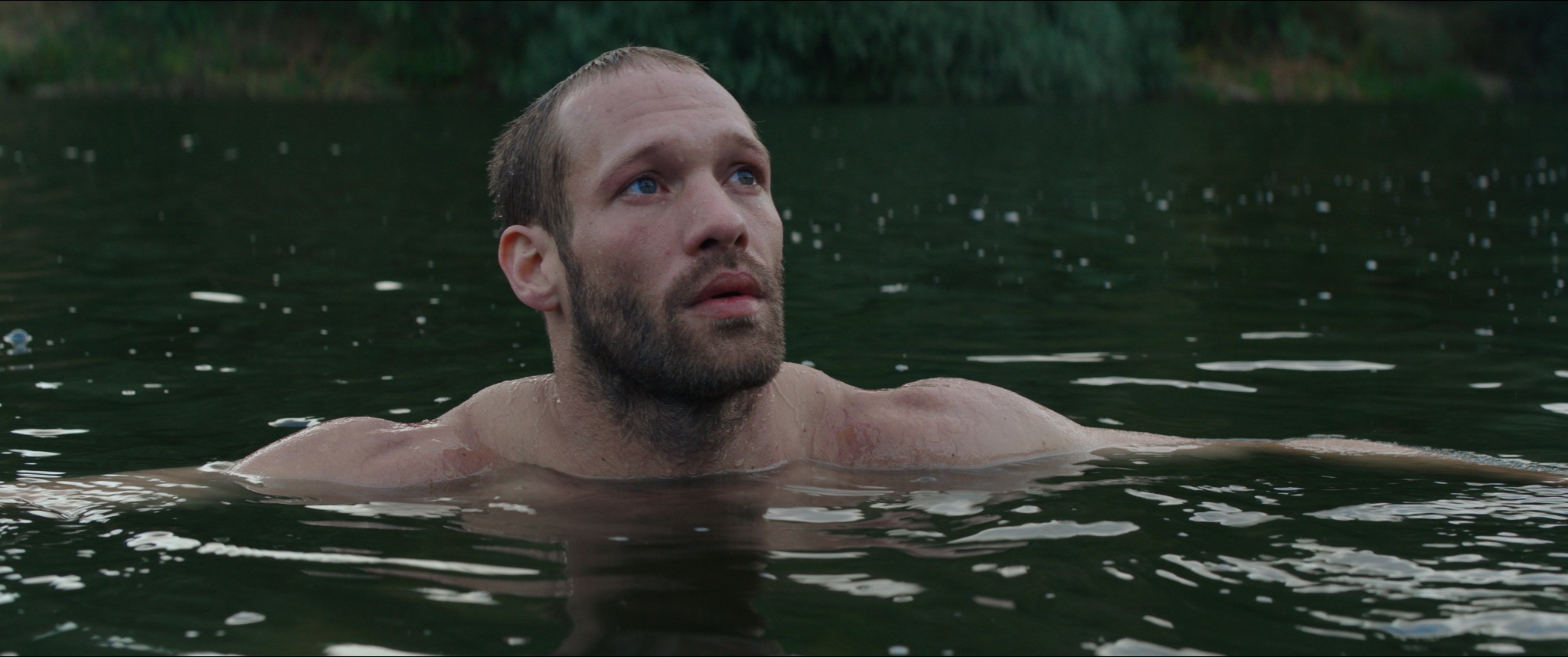
Kira Muratova’s game with mise-en-scène in Eternal Homecoming, in this case, follows other paths. Representation as an example of the malleability of reality and its many faces seems to be Muratova’s objective in this film which has a burlesque air. Evoking in some way the Borgesian splitting (but above all Nietzsch’s eternal recurrence, that which gives weight to events, and which here becomes an ironic, philosophical game), Muratova repeats the same scene in different settings and with different actors: a man visits a woman, both are former classmates who haven’t seen each other in a long time; the man asks the woman for advice: he doesn’t know if he should stay with his wife or go off with his mistress. By dint of repetition, and of minimal variations in gestures, in framing, in editing, in inflections and tones, in appearances, the scenes are never identical. This is proof that the same isn’t equal, nor is what is real true, and even less so in a world of artifices like the cinema (as will be seen towards the end of the film).
Another of the aspects through which there is an escape from reason in this group of films is autobiography. The invention of the self, of one self, which implies even on its most fantastic side certain truths about the inner depths of those who carry it out. In The Wolf from the Royal Vineyard Street, Jan Nêmec, before dying, seems to want to leave all his affairs in order by means of a monumental joke, with the temerity of one who has seen it all and has nothing to lose. One actor plays the role of Nêmec when he is young, and another when he is old, in this adaptation of his book of autobiographical stories. The film is divided into various acts, key moments in his career as a filmmaker. That is how he tells of his journey to Cannes in 1968, and he does it by sneaking into the 2015 edition to film in secret his story (and that of the Czech new wave at the festival, and his problems with Milos Forman, for example). He reinterprets his clashes with the authorities, first because of his adaptation of Kafka’s Metamorphosis, then because of his request for a visa to return to his country to attend the “funeral of communism”. He tells of his encounter (today even more significant if that’s possible) with Ivana Trump to obtain funding. And he tells of the glittering career he undertook, when he didn’t obtain that funding, filming weddings in the United States. The revision (in which there is nothing that didn’t happen) fits more with its protagonist’s way of seeing, thinking and feeling things, opening another door in this collection of views: that of one reality that unfolds into several, depending on who’s looking at it, and into which Nêmec doesn’t hesitate to pour a heap of exaggerations, desires and sardonic judgements.
In the case of Boris Lehman, Funeral (On the Art of Dying) has a special significance for various reasons. One of the areas with most weight in his extensive filmography is that dedicated to autobiography. With a diary-like appearance, but with an obvious, painstaking mise-en-scène, the series of films called Babel, which starts in 1983 with the also called Babel - prologue and A Letter Left Behind to My Friends in Belgium / The Return (1983-1990) looks at various of Lehman’s biographical motifs. An exhaustive inventory of the real Boris, who seems to put his life in order so as to catalogue it in (beautiful) images and in thematic sections. For example: Histoire de ma vie racontée par mes photographiess (1994-2001), which is, as its title describes, an attempt to tell his life through his own collection of photos, Mes 7 lieux (1999-2013), a journey through his seven favourite places, or L’histoire de mes cheveux (2003-2010), a story of his hair, in which the strictly capillary theme finally brings up his own roots as an individual. In this context, in which order and compartmentalization are already fiction, Lehman “liquidates” his protagonist self in the series Babel, and organizes a luxurious funeral for himself with all the surrealist images which something like that evokes: a man who chooses his own coffin, organises his own funeral service and experiences it transported on the shoulders of his loved ones. As in a temporal interstice, cinema is capable of doing something like that.
Death is precisely what leads us to the final current in this group of films: that other intangible dimension, the beyond. What can be, in its turn, one of the possible ways of exploring the limits of reality. That is what The Girl from Nowhere, by Jean-Claude Brisseau, seems to do. It can be read as a ghost story, or as a film that plays at confusion between what’s real and what’s imagined. In the film Brisseau himself plays a retired, widowed maths professor, who lives shut away in his apartment writing a book about supernatural happenings. One day, a young woman who has just received a beating, appears on the landing of his staircase. The professor takes her in and the young woman becomes the incarnation of that supernatural world that invades his apartment. A way of entering the frame, barely glimpsed images, a certain countershot: with recourses like those Brisseau introduces the ghostly element, which gradually soaks through but always questioning whether that “girl from nowhere” could also be a ghost or a fruit of his imagination. If the transgression of the limits of the physical, of sexual pleasure, was a substantial part of Brisseau’s previous films, this transgression goes beyond the borders of the corporeal and the real.
That is the series of filmic labyrinths offered by this section: gardens of paths that fork into diverging, convergent and parallel dimensions that emerge into the light (of the projector) thanks to the possibilities of cinema.
Por Elena Duque



